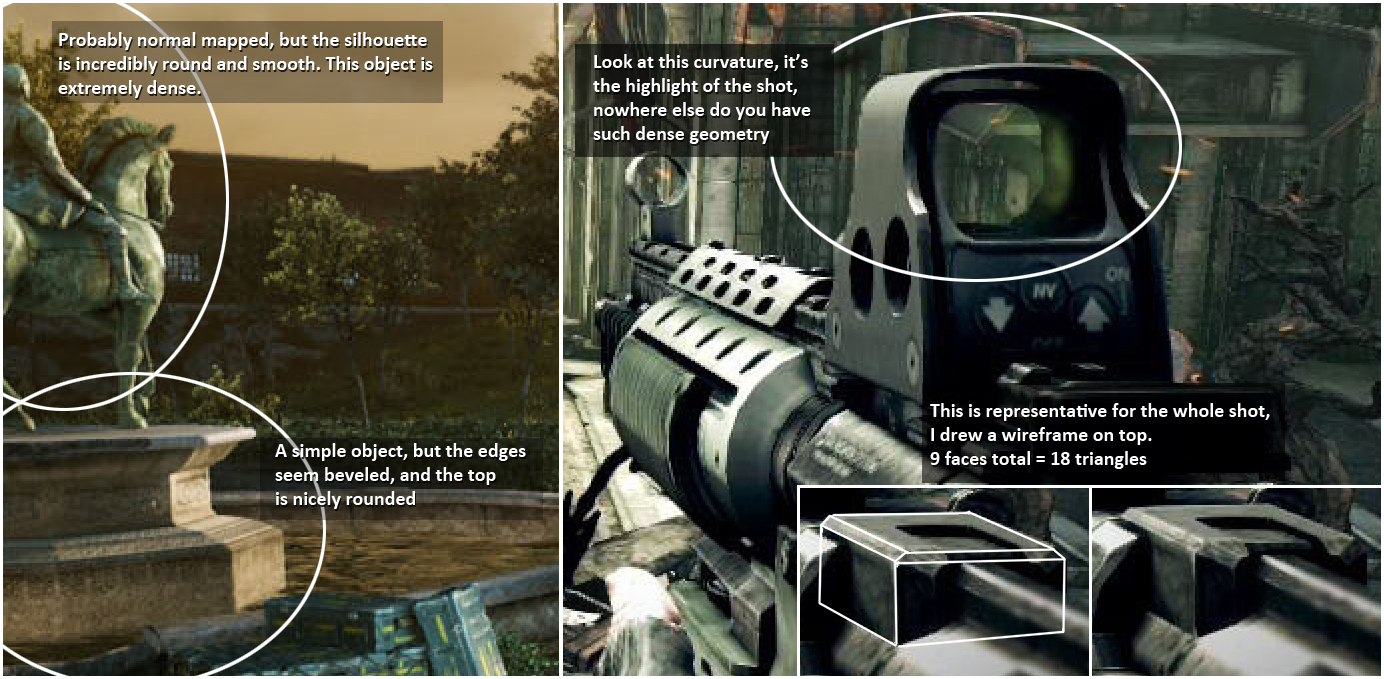Problem is in C2, world shadows are all there are. Local lights generate no shadows. The main thing you'll notice is that in C2, firing your weapon in a dark area doesn't light it up much, almost like a last-gen game. In KZ2, muzzle flashes result in some pretty impressive effects. KZ2/3 have far more local lights, which result in far more shadows reacting to far more of the action. As a matter of technical comparison, shadows that respond to all lights > shadows that respond only to area lights. Deal with it.
Deferred shading also allowed them to use MSAA in KZ2. As a matter of technical comparsion, MSAA > jaggies. Deal with it.
http://www.guerrilla-games.com/publications/dr_kz2_rsx_dev07.pdf
You will notice from the presentation that all those complex dynamic lights they're able to do (and Crysis can't) due to deferred shading preclude the use of HDR. That's the tradeoff.
I don't have C2 any more, but it had a whole lot more fidelity issues than KZ2/3 had. Have you played any of the games?
CE3 uses deferred lighting (light pre-pass) and can also display many lights at a time. Also nothing stops developers from using MSAA with deferred rendering, it's just the bloated memory consumption that is an issue (no different for KZ). An additional buffer is also necessary for transparencies I believe, consuming more memory. There's also an issue with material shaders in a fully deferred set up IIRC.
KZ's use of light and shadow maps can produce some cool effects, but the use is limited IIRC (as in muzzle flashes not casting shadows with a certain number of characters on screen). A developer from 4A games commented on the limitation of their lighting in a DF interview.
I could be off on all this though.
This. I agree with this. Now if you could L. Scofield and Laa-Yosh to agree instead of pretending Crysis makes zero meaningful trade-offs in order to have nice scene lighting. And you don't see me or anyone else claiming there are no technical sacrifices in KZ. There are technical sacrifices in every game ever made for a finite-state machine.
Well while I'm not as bothered by the lack of precision as Laa-Yosh, I don't really disagree with his points. As for Scofield, I don't agree with his approach, but that's between you two.
Also my comments aren't really directed towards you specifically. Just tying to view things from both sides.
Last edited by a moderator:


